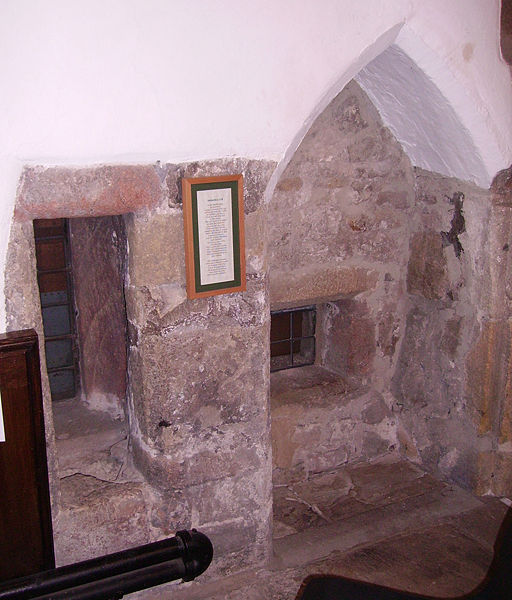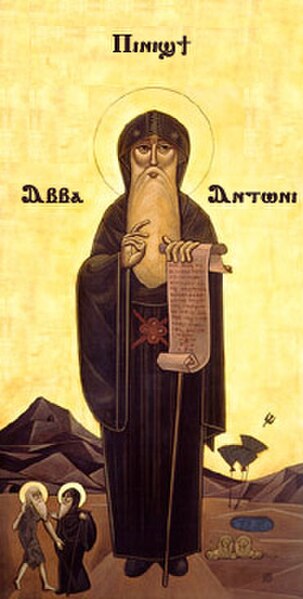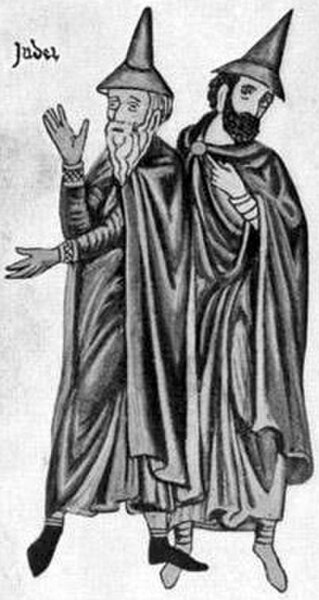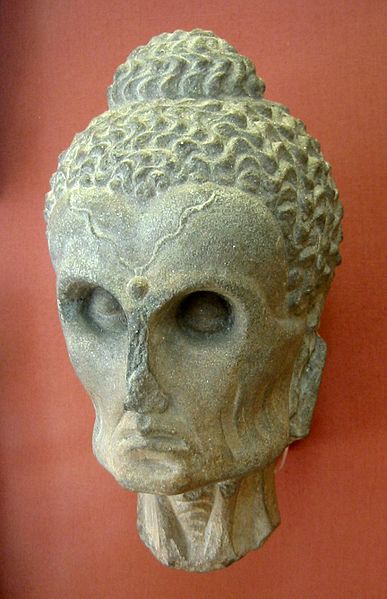In Christianity, an anchorite or anchoret is someone who, for religious reasons, withdraws from secular society to be able to lead an intensely prayer-orientated, ascetic, or Eucharist-focused life. Anchorites are frequently considered to be a type of hermit, but unlike hermits, they were required to take a vow of stability of place, opting for permanent enclosure in cells often attached to churches. Also unlike hermits, anchorites were subject to a religious rite of consecration that closely resembled the funeral rite, following which they would be considered dead to the world and a type of living saint. Anchorites had a certain autonomy, as they did not answer to any ecclesiastical authority apart from bishops.
Anchorite's cell in Holy Trinity Church, Skipton
Christina Carpenter was walled in to a cell in St James's Church in Shere, Surrey.
The Anchorite (1881), by Teodor Axentowicz
Anthony the Great, father of Christian Monasticism and early anchorite. The Coptic inscription reads ' Ⲡⲓⲛⲓϣϯ Ⲁⲃⲃⲁ Ⲁⲛⲧⲱⲛⲓ' or 'The Great Father Anthony'.
Asceticism is a lifestyle characterized by abstinence from sensual pleasures, often for the purpose of pursuing spiritual goals. Ascetics may withdraw from the world for their practices or continue to be part of their society, but typically adopt a frugal lifestyle, characterised by the renunciation of material possessions and physical pleasures, and also spend time fasting while concentrating on the practice of religion or reflection upon spiritual matters, which is thought by some to allow the practitioner's core of consciousness to expand and connect with the infinite universal consciousness. Some individuals have also attempted an ascetic lifestyle to free themselves from addictions to things such as alcohol, tobacco, drugs, entertainment, sex, food, etc.
Coptic icon of St. Anthony the Great, father of Christian monasticism and early anchorite. The Coptic inscription reads 'Ⲡⲓⲛⲓϣϯ Ⲁⲃⲃⲁ Ⲁⲛⲧⲱⲛⲓ' ("the Great Father Anthony").
A Sufi Muslim ascetic (fakir) in Bengal during the 1860s
Chassidei Ashkenaz were a Jewish mystical and ascetic movement in medieval Germany.
The Buddha as an ascetic. Gandhara, 2nd–3rd century CE. British Museum







